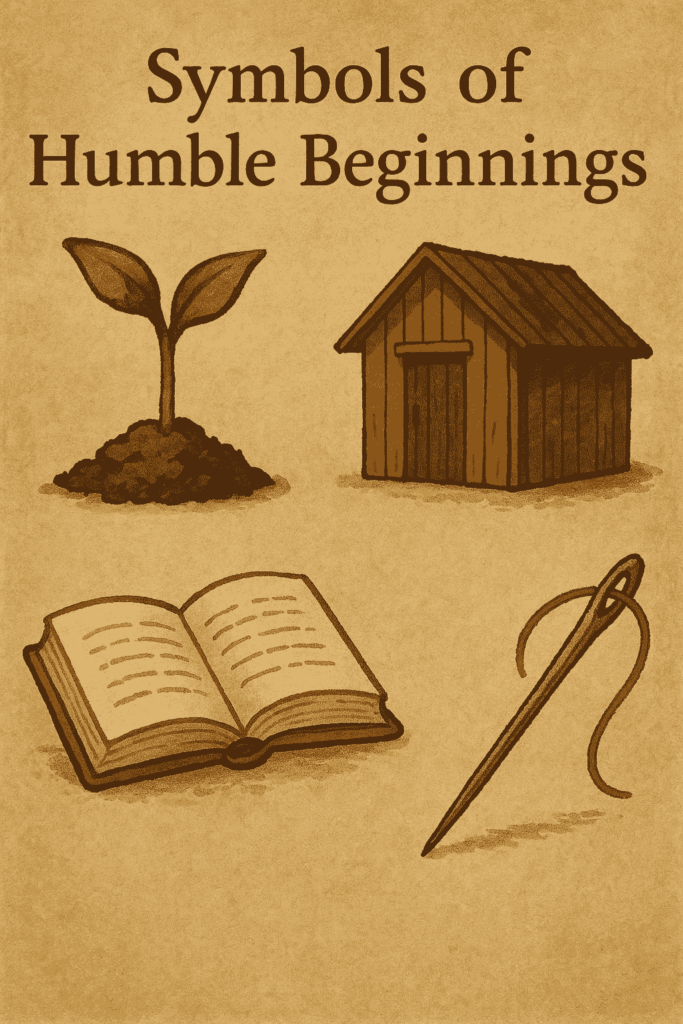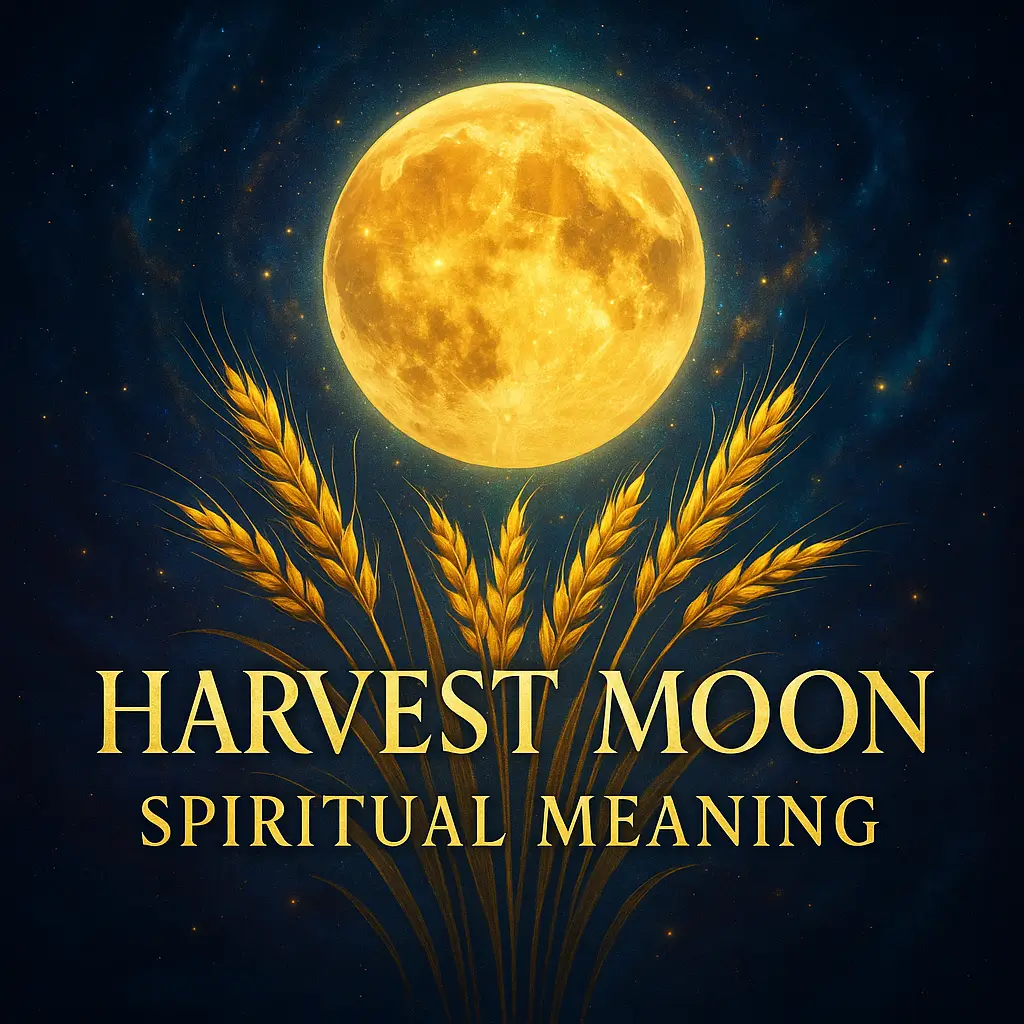Table of Contents
- 1 Symbols of Humble Beginnings: Animal Guides on the Path to Transformation
- 2 Key Takeaways
- 3 Humble Origins: Understanding Animal Symbols of New Beginnings
- 3.1 The Lamb: Innocence and Sacred Beginnings
- 3.2 The Caterpillar: Hidden Potential
- 3.3 The Turtle: Patience and Steady Progress
- 3.4 The Mouse: Observant Awareness
- 3.5 The Acorn: Potential Within Smallness
- 3.6 The Sparrow: Small Symbols of Humble Beginnings with Mighty Messages
- 3.7 The Ant: Collective Wisdom in Humble Origins
- 3.8 The Lotus: Transformational Symbols from Muddy Depths
- 3.9 Dream Encounters with Humble Origin Symbols
Symbols of Humble Beginnings: Animal Guides on the Path to Transformation
Did you know that a caterpillar’s body completely dissolves inside its chrysalis before becoming a butterfly? This isn’t merely transformation—it’s biological resurrection. The caterpillar’s cells literally break down into soup before reorganizing into something entirely new, yet carrying the same essence.
This extraordinary metamorphosis is perhaps nature’s most powerful symbol of humble beginnings—a reminder that greatness often emerges from the most unassuming origins. Throughout human history, we’ve looked to the animal kingdom for spiritual guidance, finding profound meaning in creatures that embody the journey from modest starts to magnificent outcomes.
In this exploration of symbols of humble beginnings, we’ll journey through cultural traditions, spiritual practices, and ancient wisdom to understand how animals like the lamb, turtle, and sparrow teach us about patience, resilience, and the sacred power of starting small. From biblical parables to Native American wisdom, these creatures have whispered the same truth: transformation begins with humility.
Key Takeaways
- Humble beginnings in animal symbolism teach us that greatness often emerges slowly from the most overlooked places.
- Animals like the lamb and caterpillar remind us that vulnerability and transformation require patience and complete surrender.
- The turtle symbolizes that embracing our natural pace leads to remarkable endurance and achievement over time.
- Small creatures like sparrows and ants demonstrate how seemingly insignificant beings can create outcomes far greater than what appears possible.
- These symbolic animals invite us to honor where we start and trust the process of growth, recognizing that humility itself can be a profound source of strength.
Humble Origins: Understanding Animal Symbols of New Beginnings
In the sacred language of symbolism, animals that represent humble beginnings offer us profound lessons about patience, growth, and transformation. These creatures – often small, quiet, or in developmental stages – remind us that greatness doesn’t always announce itself with fanfare. Instead, it emerges slowly, often from the most overlooked places.
The Lamb: Innocence and Sacred Beginnings
Perhaps no animal more perfectly embodies humble beginnings than the lamb. Across cultures, but especially within Christian traditions, the lamb represents purity, innocence, and the sacred potential of new life.
When a lamb enters the world, it does so with complete vulnerability – wobbly legs finding balance, eyes adjusting to light, entirely dependent on its mother. Yet within this vulnerability lies profound symbolic power.
In biblical contexts, lambs were sacrificial animals, their purity making them worthy offerings. Jesus himself became “the Lamb of God,” showing how humility can transform into divine purpose. The symbolism extends beyond religious contexts – whenever we embark on something new with open hearts and beginner’s minds, we embody the spirit animal energy of the lamb.
I once visited a small farm during lambing season in early spring. Watching those newborns take their first steps – falling, rising, trying again – I witnessed a perfect metaphor for all meaningful journeys. There was no shame in their stumbling, only persistence and trust in the process.
The Caterpillar: Hidden Potential
If you’ve ever held a caterpillar in your palm, you’ve cradled one of nature’s most profound symbols of humble beginnings. This creature embodies the principle that greatness often requires a period of crawling before flying.
The caterpillar’s journey teaches us that transformation isn’t instant – it’s a process requiring patience, darkness, and complete surrender. Inside its chrysalis, the caterpillar doesn’t simply grow wings; it undergoes complete cellular reorganization, essentially dissolving before becoming something new.
This humble creature reminds us that our most challenging periods of growth – those times when we feel confined, limited, or still “crawling” – are often precisely when our greatest transformations are underway.
The Turtle: Patience and Steady Progress
Carrying its home upon its back, the turtle embodies humble beginnings through persistence and unhurried wisdom. With lifespans that can exceed a century, turtles teach us about the power of slow, steady progress over immediate results.
In Native American traditions, the turtle is often seen as the animal upon whose back the world rests. Despite this immense symbolic responsibility, the turtle moves without haste, taking each step with purpose and deliberation.

The turtle shows us that embracing our own natural pace – however slow it might seem compared to others – can lead to remarkable endurance and achievement. When we rush toward our goals, we miss the lessons found in patient progress.
The Mouse: Observant Awareness
Small, quiet, and often overlooked, the mouse symbolism teaches us about finding strength in modesty and careful observation. Despite their size, mice are extraordinarily adaptable, thriving in almost every ecosystem on Earth through intelligence rather than physical power.
In Celtic mythology, mice were sometimes considered capable of traveling between worlds due to their ability to navigate small spaces. This suggests spiritual access through humility – the mouse reminds us that sometimes the smallest doorways lead to the most expansive realms.
When the mouse appears as a symbolic animal in your life, it may be inviting you to pay attention to the details others miss, to gather resources carefully, and to recognize that your perceived limitations might actually be sources of unique strength.
The Acorn: Potential Within Smallness
While not an animal, the acorn’s symbolism perfectly complements our exploration of humble beginnings. This tiny seed contains the complete blueprint for a mighty oak tree that may live for centuries.
The acorn teaches us that greatness isn’t determined by current size or circumstances, but by inner potential and the right conditions for growth. Just as the acorn requires darkness, moisture, and time below ground before breaking through to the light, our own greatest achievements often require periods of quiet development before becoming visible.
Looking at these symbols of humble beginnings, we find a common thread – the most powerful transformations often begin in the quietest, smallest, or most ordinary ways. These animal guides remind us to honor where we start, trust the process of growth, and recognize that humility itself can be a profound source of strength.
The Sparrow: Small Symbols of Humble Beginnings with Mighty Messages
Among the most overlooked symbols of humble beginnings in the animal kingdom is the modest sparrow. These small brown birds, found on every continent except Antarctica, carry profound symbolic weight despite their diminutive size. In many spiritual traditions, sparrows represent the divine’s attention to the smallest details of creation.
Jesus referenced sparrows specifically when teaching about value beyond appearances: “Are not two sparrows sold for a penny? Yet not one of them will fall to the ground outside your Father’s care.” This powerful metaphor reminds us that true worth isn’t measured by worldly standards – that the seemingly insignificant carries immense spiritual importance.
When a sparrow builds its nest, it gathers tiny bits of grass, twigs, and found objects – humble materials transformed through patience into a perfect home. This process mirrors our own journey of creating meaningful lives from modest resources and opportunities.
In Japanese culture, the sparrow (suzume) appears in folk tales as a spiritual animal guide that rewards kindness and humility. The tale of “Shita-kiri Suzume” (Tongue-Cut Sparrow) teaches that greed leads to empty boxes while humility brings unexpected treasures – a perfect representation of how humble beginnings often yield the richest rewards.
The Ant: Collective Wisdom in Humble Origins
Few creatures better embody humble beginnings with extraordinary outcomes than the tiny ant. These insects, weighing mere milligrams individually, create colonies capable of architectural and social feats that rival human achievements. The ant teaches us that significance isn’t determined by individual size but by purpose, persistence, and community.
In Proverbs 6:6, wisdom literature points to the ant as an example: “Go to the ant, you sluggard; consider its ways and be wise.” This animal symbolism highlights how the most fundamental lessons often come from the smallest teachers. Ants don’t require supervision or external motivation – they intuitively understand their purpose and fulfill it diligently.
As totem animals, ants remind us that our humble efforts, when aligned with community and consistent action, create outcomes far greater than what appears possible. When you feel insignificant or that your contributions don’t matter, the ant appears as a spirit animal reminder that small actions compound into mighty results.
The Lotus: Transformational Symbols from Muddy Depths
Though technically a plant, the lotus deserves mention among symbols of humble beginnings for its remarkable journey. This flower begins life in the murky, oxygen-poor mud at the bottom of ponds and lakes – perhaps the humblest starting point imaginable. Yet through persistent growth toward light, it emerges as one of nature’s most perfect blooms.
In Vietnam and throughout Asia, the lotus flower symbolism represents the potential for beauty to emerge from difficult circumstances. Buddhist teachings use the lotus as a metaphor for how enlightenment springs from suffering – the muddier the waters, the more beautiful the flower that blooms.
The lotus teaches us that our challenges and humble circumstances aren’t limitations but rather the rich soil from which our greatest gifts may grow. When we embrace rather than resist our humble beginnings, we allow for authentic transformation to unfold.
Dream Encounters with Humble Origin Symbols
When these symbols of humble beginnings appear in dreams, they often carry messages about our relationship with growth, patience, and self-perception. Dreaming of ants might indicate that you’re overlooking the power of small, consistent efforts. A sparrow appearing in dreams might suggest you’re undervaluing your own voice or contributions.
According to dream research, animals in dreams often represent aspects of ourselves or situations we’re navigating. When humble creatures like mice, sparrows, or caterpillars visit our dreamscapes, they may be inviting us to embrace phases of growth that feel small or overlooked.
Dreams featuring the lotus emerging from mud might symbolize emotional or spiritual rebirth after difficulty. Such dreams remind us that transformation requires both darkness and light – periods of hiding and periods of blooming.
When working with humble beginnings symbolism, consider keeping a dream journal. Note which animals or symbols appear during significant life transitions. Over time, patterns emerge that reveal your personal relationship with humble growth and transformation.
These symbols remind us that within every modest beginning lies the seed of something magnificent. The journey from acorn to oak, caterpillar to butterfly, or spark to flame isn’t just a physical transformation – it’s a spiritual template for understanding our own potential and the sacred nature of humble starts.



